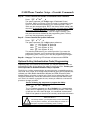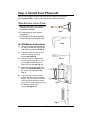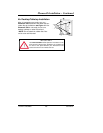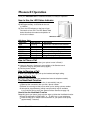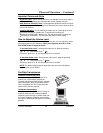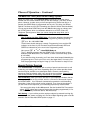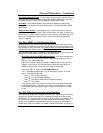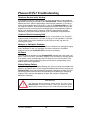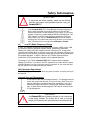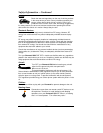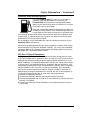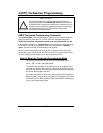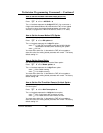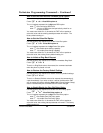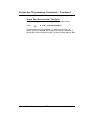
PHONECELL SX3e AMPS 21 USER MANUAL
Safety Information – Continued
Potentially Explosive Atmospheres
Turn your Phonecell SX3 OFF when in any area with a
potentially explosive atmosphere. It is rare, but your
Phonecell SX3 or its accessories could generate sparks.
Sparks in such areas could cause an explosion or fire result-
ing in bodily injury or even death.
Areas with a potentially explosive atmosphere are often, but
not always, clearly marked. They include fueling areas such
as gas stations; below deck on boats; fuel or chemical trans-
fer or storage facilities; areas where the air contains chemicals or particles, such
as grain, dust, or metal powders; and any other area where you would normally
be advised to turn off your vehicle engine.
Do not transport or store flammable gas, liquid or explosives in the area of your
Phonecell SX3 or accessories.
Vehicles using liquefied petroleum gas (such as propane or butane) must comply
with the National Fire Protection Standard (FPA-58). For a copy of this standard,
contact the National Fire Protection Association, One Batterymarch Park, Quincy,
MA 02269, Attn: Publications Sales Division.
FCC Part 15 Class B Compliance
This Phonecell SX3 model has been tested and found to comply with the limits
for a Class B digital device, pursuant to Part 15 of the FCC rules. These limits are
designed to provide reasonable protection against harmful interference in a resi-
dential installation. This equipment generates, uses and can radiate radio frequen-
cy energy and, if not installed and used in accordance with the instructions, may
cause harmful interference to radio communications. However, there is no guaran-
tee that interference will not occur in a particular installation. If this equipment
does cause harmful interference to radio or television reception, which can be
determined by turning the equipment OFF and ON, the user is encouraged to try
to correct the interference by one or more of the following measures:
••
Reorient or relocate the antenna.
••
Increase the separation between the equipment and the terminal.
••
Connect the equipment into an outlet on a circuit different from that to which the
terminal is connected.
••
Consult your Authorized Telular Distributor or an experienced radio/TV techni-
cian for help.



